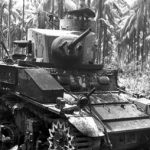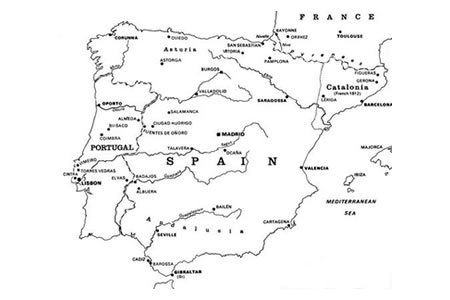
Between 1808 and 1814, the British Army fought a war in the Iberian Peninsula against the invading forces of Napoleon’s France. Aided by their Spanish and Portuguese allies, the British held off superior French numbers before winning a series of victories and driving them out. They then carried the war into France, playing an important part in Napoleon’s first overthrow.
The 3rd King’s Own Regiment of Dragoons, the 4th Queen’s Own Dragoons and the 7th Queen’s Own Light Dragoons (Hussars) all played a part during this campaign.
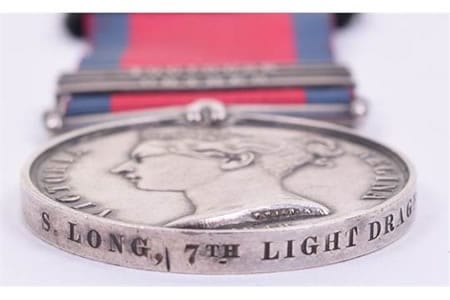
Arrival in the Peninsula
In December 1808 the 4th Queen’s Own Dragoons sailed to Portugal to join Wellesley’s Army which was trying to push the French out of Portugal by bringing them to battle in Spain.
In 1811 the 3rd King’s Own Regiment of Dragoons joined Wellington’s Army in the Peninsula, taking part in the campaign of the following year including many unremarkable skirmishes until the major battle at Salamanca.
Half of the 7th Queen’s Own Light Dragoons (Hussars) disembarked at Bilbao on 29th Aug 1813, and the other half at Los Passages a few days later. On the 2nd of October they began the long trek through northeast Spain, over the Pyrenees and into France. The regiment were not seriously in action until they reached Orthes, but before that they suffered great hardship and starvation.
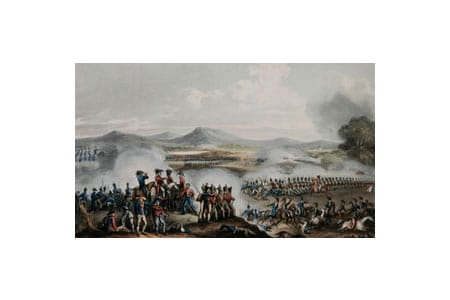
Talavera
The 4th Queen’s Own Dragoons were present at the battle of Talavera, but the action was in effect a slogging match between the infantry forces. There was no rout at Talavera, the victor being decided by a tally of casualties and the withdrawal of the French forces that night. Although they saw no direct action the 4th did suffer some casualties.
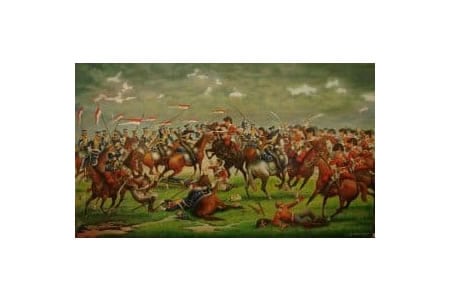
Albuhera
The 4th Queen’s Own Dragoons played two distinct roles in this important battle at the turning point of the Peninsula Campaign.
In the early stages, the left wing of the 4th were ordered to hold the bridge over the River Albuhera and with the 13th Light Dragoons, did so throughout the battle, enduring five hours of heavy fire from artillery and musketry.
The two squadrons of the right wing later charged and dispersed two regiments of Polish Lancers and Hussars that had surrounded and cut off a brigade of allied infantry.
They then advanced with infantry into the left flank of the French line, who eventually broke and fled.
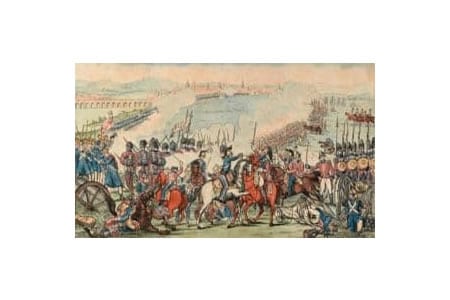
Salamanca
The 3rd King’s Own Regiment of Dragoons, along with the 4th Queen’s Own Dragoons were two of the three Regiments that made up Le Marchant’s famous heavy Brigade took part in a murderous Charge described by Wellington with praise, ‘I never saw anything so beautiful in all my life’.
Wellington’s perfect timing of his attack routed 40,000 Frenchmen in 40 minutes, with the cavalry being the chief instrument of destruction.After the rout of the French,
The 4th Dragoons captured some of Joseph Bonaparte’s silver from the baggage train which was melted down to provide cutlery and the Salamanca Donkey in the Officers’ Mess.
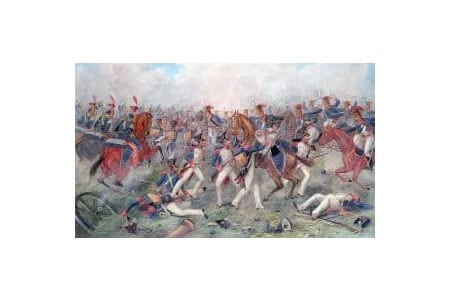
Vittoria
The 3rd King’s Own Regiment of Dragoons, along with the 4th Queen’s Own Dragoons were part of Ponsonby’s Heavy Brigade in this battle where the French decided to make a stand against Wellington’s armies.
Unfortunately they were not called upon but were commended for maintaining their position and holding steady in the centre of the line.
After the French had broken, they were ordered to pursue; in so doing they had to ride through Vittoria itself where a lot of the allied army were busying themselves looting the baggage of the French.
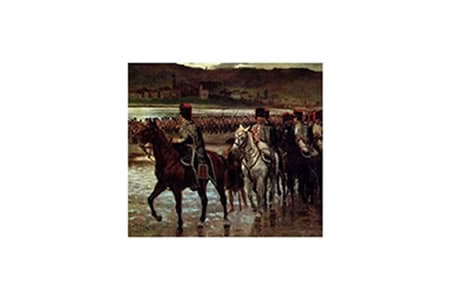
Orthes
In February 1814, the 7th Hussars distinguished itself by its magnificent bearing in the Battle of Orthes when engaged in driving the French from an entrenched position by the River Pau.
When the enemy gave way beneath the British assault, the 7th Hussars dashed forward in pursuit and, by a brilliant charge, overthrew a body of the foe, taking many prisoners. A second charge, led as before by Colonel Kerrison, resulted in the surrender of 700 more French troops.
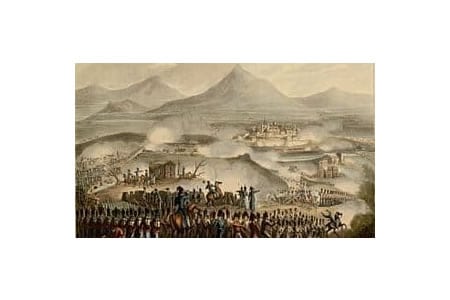
Toulouse
The 3rd King’s Own Regiment of Dragoons, along with the 4th Queen’s Own Dragoons were part of Ponsonby’s Heavy Brigade in This the final battle of the Peninsula campaign.
They supported the Spanish infantry in the centre of the line and enabled them to reform after their initial assault had been repulsed, and then saved the Portuguese guns from being captured.


